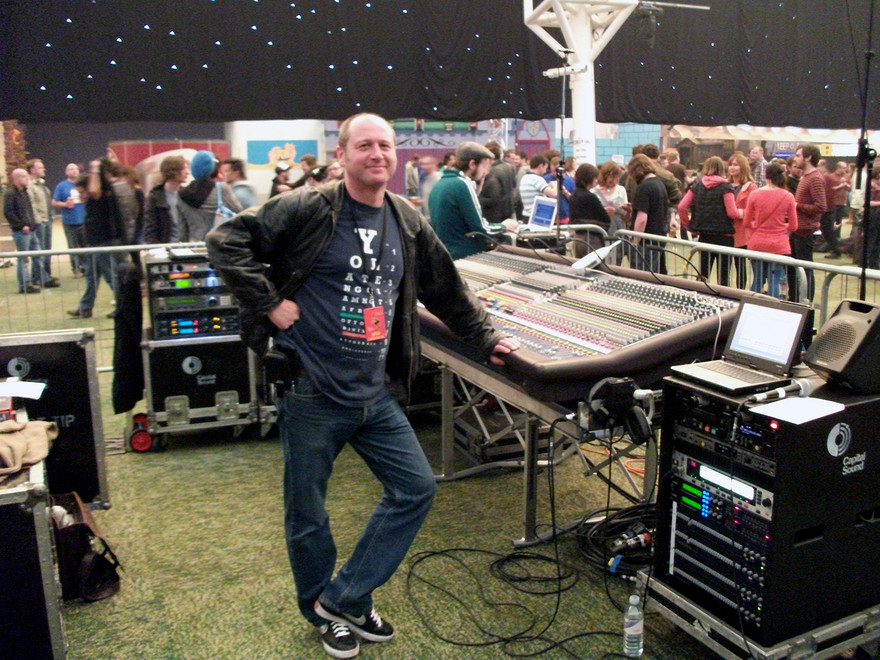
Tex Houston at the sound desk mixing The Clean, All Tomorrow's Parties Festival, UK, 2010.
“I’ve had this lifelong fascination with making things sound good ...”
Tex Houston is one of the nice guys. I first met him at an early Netherworld Dancing Toys (NDTs) rehearsal on a Saturday morning. Yes, practising at 10am on a Saturday morning folks, strange but true ... it wasn’t my idea. We’d just moved into the space along with a full PA system that had been lugged up steep stairs and gingerly carried around a sagging section of first floor flooring.
The band was set up in performance formation as part of our unspoken “we mean business” philosophy. No standing around in a noodling rehearsal circle for the NDTs. At the far end on a trestle table was a mixing desk. I’d not been in a band with a PA or a mixing desk, let alone an engineer.
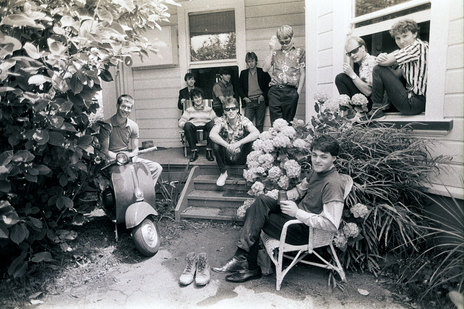
NDTS 1984, left to right – Malcolm Black, Neville Schwabe, Graham Cockroft, Steve Renwick, Paul Docherty (roadie/entertainment officer), Gary Valentine, Tex Houston (sound), Nick Sampson, Ged Taylor (lights), Brent Alexander - Photo by Bruce Maunsell. Nick Sampson Collection
Tex wandered in unannounced as we were rehearsing and took up what would become his familiar place behind the desk. When the song finished our bass player Graham Cockroft introduced him to the rest of us and asked what he thought. And so it was that this good-humoured bloke entered our orbit and offered a considered “critique”, along with his customary chuckle.
After cutting his teeth as live engineer with the NDTs he went on to become a central figure in the Dunedin scene, touring New Zealand and the world with some of the leading Flying Nun bands.
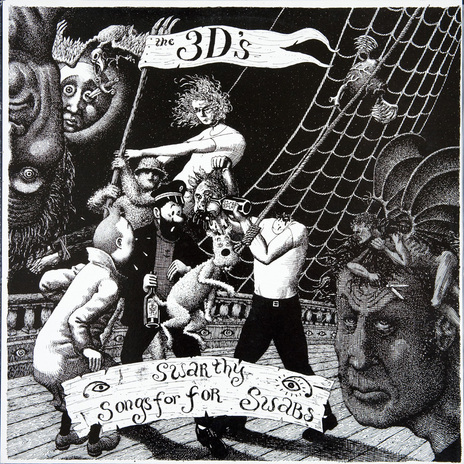
1991's Swarthy Songs For Swabs EP with artwork by David Mitchell. It was the first recording co-produced by Tex Houston, who would work with the band thereafter.
Along the way he was co-owner with Stephen Kilroy of Dunedin’s important Fish Street Studios, and recorded albums by The Clean, The 3Ds, The Verlaines, Able Tasmans, The Renderers and The Subliminals to name a few. As recently as 2024 he’s been working on a new album for The Bats and doing live sound for Shayne Carter’s Dimmer. Incredibly, online music database Discogs credits him as recording and co-producing 127 albums, EPs and singles.
School Days
Tex was part of a group of friends with a love of 60s music who were swept up with punk and new wave. They went to lots of gigs including early shows by The Enemy and The Clean at the Coronation and Beneficiaries Halls. Out of these friends, a band was formed (including future NDT Graham Cockroft) playing a mix of 60s, punk and new wave covers, along with a couple of originals. When the singer moved to Australia, Tex took hold of the microphone.
The band bought a van, a sizeable PA and undertook a summer tour around Central Otago and the North Island. However, with the start of university things ran out of steam, leaving the unused PA gathering dust. Not a natural show-off, Tex had already decided that doing sound was his true calling. Step in the fledgling NDTs and a home for the PA. As it turned out, in our eight years the band never did a show without Tex out front doing sound.
Like a duck to water
Although thrown in at the deep end, Tex took to live mixing like a duck to water. Several early memories spring to mind:
At the NDTs debut gig with 500 drunken students rammed into a crowded hall, the PA died as we were about to go on stage. After half an hour of calmness, buried in the side of stage darkness among a stack of amps with a small torch in his mouth – we always suspected a piece off number eight wire was also involved – Tex mysteriously got the system back to life. It was the first of many such instances.
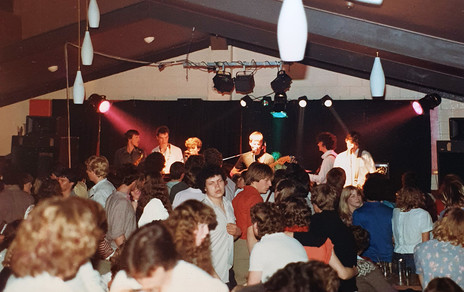
Netherworld Dancing Toys onstage at the Oriental Tavern, Dunedin, 1982. Photo by Ged Taylor
As we toured more people in the know started commenting on the band having good sound. This became increasingly important.
When the NDTs were offered the replacement spot for INXS at Sweetwaters in January 1983, only six months after mixing his first gig, Tex was confronted with the NASA-like array of mixing and effects gear of a full concert rig. A quantum leap from the normal pub set-up. Again, he was typically calm under fire, and we sounded great apparently.
Along with NDT lighting guy extraordinaire Ged Taylor, Tex was diligent in ensuring no one got big-headed when things started to get successful. A typical example was our second weekend at Christchurch’s Gladstone playing to capacity houses. As we hit the stage the two of them (both full partners in the band) were clearly visible standing on the mixing/lighting platform resplendent in bright yellow T-shirts with “NDT Ego Control” emblazoned across the front.
--
Nick Sampson: Tell us about getting started in music and learning to do live sound on the job.
Tex Houston: “I’ve always been totally into music. In my teens my friends and I took any opportunity available to hear new music. We used to go to our friend Graham’s at lunchtime when we were at school to listen to Blondie, The Jam, Toy Love, and whatever else was available to us.
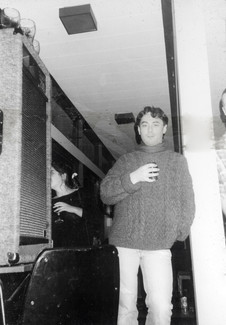
Doug Hood, Looney Tours, 1986. - Doug Hood Collection
“Buying a PA together introduced me to sound systems and also started my fascination with speakers, I guess. I learnt pretty quickly how to put systems together. I knew how the signal chain worked. It just made sense to me, and I could trace a fault and usually fix it.
“With the NDTs being quite successful in a short time it was like being thrown in the deep end and having to learn quickly. As the band was on Flying Nun at the time, it wasn’t long before I met Doug Hood (ONZM). I had to leave an early tour in New Plymouth and drive the truck to Auckland to get a PA back on Christmas Day. Doug welcomed me into his home, fed and watered me, and put me up for the night. He became very supportive and suggested to The Chills that they should use me.
“It was around this time that Doug started Looney Tours, so he had me working on shows with The Johnnys, The Violent Femmes, and Paul Kelly in different capacities. This was all so I could save up some money to travel overseas with The Chills. That was a dream come true, going overseas to do sound. So the first time I left New Zealand was in 1988 to tour Australia, the US and the UK with The Chills. That opened the door to working with lots of other people.”
Fish Street Studios
Fish Street was located down near the wharves in Dunedin and played a vitally important role in the local scene. Many of the Flying Nun bands recorded there, with The 3Ds pretty much becoming the house band.
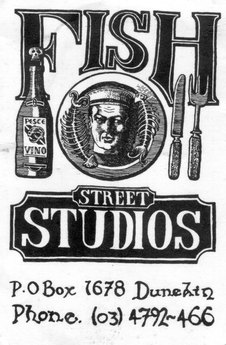
Fish Street Studios card
Tex: “My first recording had been a Look Blue Go Purple EP (LBGP EP2) at Strawberry Sound on 8-track. Then, when I came back from The Chills tour overseas, Stephen Kilroy was starting Fish Street and asked me to join him as partner. He had a couple of Neumann mics, a one-inch 8-track and a plasticky Tascam desk that had come from Radio One (Dunedin’s student radio station). We didn’t have any outboard gear really – no compressors or gates or anything, but we did have an AKG spring reverb that sounded great. Eventually we got a Lexicon 224 reverb – I loved that thing.
“I wanted to get past the limitations of 8-track recording, so we got a bank loan somehow and invested in a brand new 16-track and mixing desk. Lesley Paris became manager of Flying Nun and she was very supportive and keen to realise the potential of all the talent that was in Dunedin at the time.
“We had Fish Street from the late 80s through until the mid 90s. The 3Ds’ second EP was the first one I did there, and I ended up doing all three of their albums. I also did The Clean, David Kilgour, Stephen, two Chug albums, The Magick Heads, two Renderers albums, Loves Ugly Children and others.
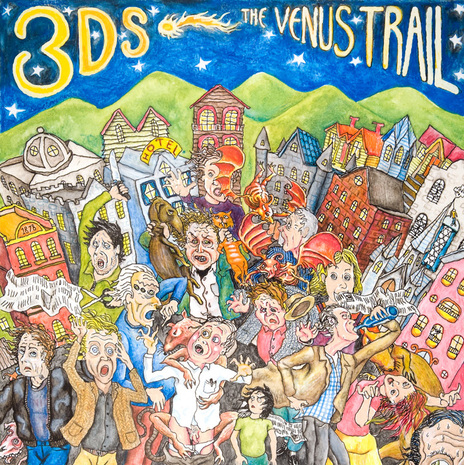
David Mitchell's cover for The Venus Trail (1993), recorded by Tex Houston
“Sometimes we’d do “remote recording”, taking the gear and setting up elsewhere, because while the studio was home base it had a low ceiling and other limitations. People would often do one record and then say let’s go and do the next one somewhere else. The 3Ds’ Venus Trail was recorded at an old Masonic Lodge in Moray Place, and we did The Clean’s Modern Rock out at Hoopers Inlet on the Peninsula.

The Clean - Modern Rock (1994)
“Eventually we had to leave Fish Street. The owners wanted the space back for offices, so a few of us banded together to buy a two-inch 24-track from the good folk at Writhe in Wellington. It was the same machine ‘For Today’ was recorded on earlier at Marmalade Studios. I moved it into Burlington Street below First Church, and did a few albums there – another 3Ds album, The Verlaines’ Over the Moon, Barbara Manning, The Magick Heads, Chug, and several others.”
Along with providing the gear, facilities and technical expertise were you having much input musically and production-wise on those recordings?
Tex: “I really wanted to realise the songs and music the way the bands envisaged them. It was very much a collective thing where everyone had equal input. There was no automation when we were mixing, so everyone helped with moving faders and muting channels etc. It was focused, but a very social thing and we had a lot of laughs!”
After Burlington Street came to an end Tex loaded the studio’s equipment into a van and drove to Auckland on two occasions to record albums for Flying Nun. One was the Able Tasmans’ last album Store in a Cool Place, released here and in the US in 1995. The other was United State by The Subliminals, released in 2000.
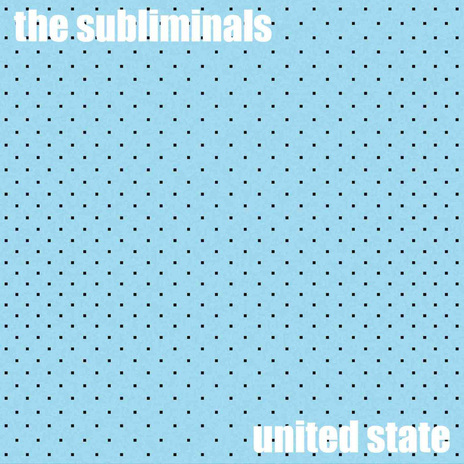
The sleeve for 2000's United State album was created by John Pitcairn and inspired by a work by UK artist Bridget Riley. The album was produced by Tex Houston at a beach house in Northland.
For the Able Tasmans, the gear was set up in the former Carrington Hospital, a multi-story brick building built in the 1860s. Empty and semi-derelict at the time, it would later become part of Unitech. Sessions ran over two weeks with Tex and the band taking turns to stay overnight to guard the equipment.
The Subliminals album was recorded over another two-week stretch in a beach house in remote Pataua, on the coast east of Whāngarei Heads. It was then mixed in Flying Nun’s Queen Street offices, “literally because we didn’t have anywhere else to go, we were very portable”.
Doing live sound and seeing the world
During and after the Fish Street years Tex continued to do live sound.
Tex: “In between albums I’d go off touring. I did a lot with bands like Straitjacket Fits, Jean-Paul Sartre Experience, Look Blue Go Purple and tons of gigs with The 3Ds including two extensive tours of the States when they played with Pavement and Superchunk. We also went to the UK. I did a year touring round the States and Europe with Barbara Manning. Later in the 2000s I also did a few tours to the States and Europe with The Clean.
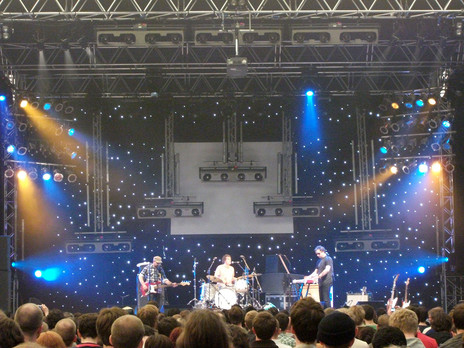
The Clean at All Tomorrow's Parties in the UK, 2010. - Tex Houston
“Prior to that, the first trip overseas with The Chills was a real eye-opener. We’d be travelling around the States trying to save money, asking people at the end of the show if they could put us up or just getting one motel room for all of us. I remember in Scotland someone took us home and kicked all his family out of their beds so we could sleep there and then fed us breakfast in the morning. People were really nice. It certainly wasn’t glamorous, but we were young and it was an adventure.”
Auckland, going digital, and back to Dunedin
In the late 90s Tex settled in Auckland for several years.
Tex: “I started gathering up recording gear again, thinking we’d eventually move back to Dunedin. I got some nice monitors and bought a Mac and Pro Tools interface.”
In the nearly 20 years since he’s been back in Dunedin, up to and including the launch of Tex Tone in 2018, Tex’s work has covered three main areas:
Live work for The Clean (European and US tours) and The Shifting Sands (US), nationwide gigs with David Kilgour and the Heavy Eights, Straitjacket Fits, Dimmer, and the one-off NDT reunion when the band played the 2018 APRA Silver Scroll Awards at Spark Arena before Malcolm Black died.
Various recording projects, including three albums with The Clean, two by David Kilgour and the Heavy Eights, several other projects, and recent work with The Bats.
Remastering a series of Flying Nun re-releases from “back in the day” including The 3Ds and The Clean.
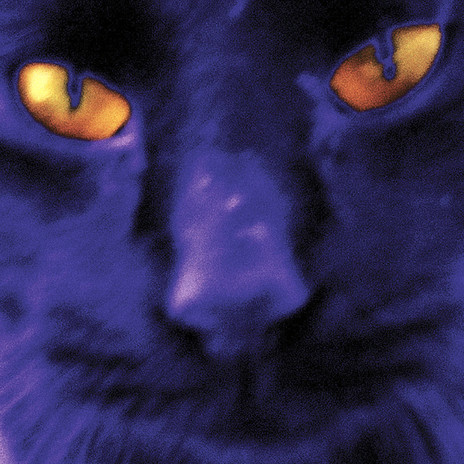
David Kilgour and the Heavy Eights - Bobbie's A Girl (Merge, 2019) - recorded mixed and mastered by Tex Houston and Thomas Bell at Port Chalmers Recording Services betwen 2015 and 2019.
Tex Tone Speakers
In 2017 Tex embarked on what has become his main focus, something he’d been planning for years: designing and manufacturing high-end Hi-Fi speakers. He developed the first prototypes after a lot of experimentation. Since moving into production in 2018 his Tex Tone speakers have received glowing reviews in the audio/hifi media – a recent 10/10 on New Zealand’s Witchdoctor being an example.
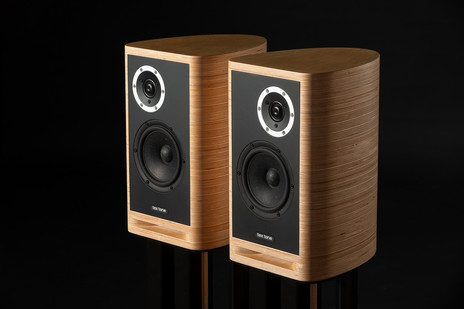
Tex Houston's Tex Tone Classics
There are currently four models on the market – Tex Tone Classics, Classic Minis, Towers and Consoles. Personalised versions of the Classics have been produced with artwork applied by Chris Knox, David Kilgour, Robert Scott and Nicola McLaren.

Bespoke Tex Tone art series speakers with art by Chris Knox
Tex: “After years working in recording and audio engineering I wanted to try and make domestic Hi-Fi speakers that sound as good as the best active studio monitors. I also wanted to create something that looks good.
“I built my first speakers when I was 16, they were fold-back wedges for our high-school band. I usually have at least 10 pairs of speakers in our house at any one time and I kept thinking I might be able to create something special, so I decided to focus on it, just for myself to start with.

Tex Houston's Tex Tone console speaker
“I spent a long time trying out different drivers and crossover designs until I arrived at the sound these speakers are producing. I built the first few cabinets by hand, experimenting with different options until I was happy with how they looked and sounded. They allow you to really get inside a song. It’s a big bonus other people think so too.”
Are you going to keep developing new models?
Tex: “Yeah I’d like to because that’s the fun part. The first of the new towers sold quickly here recently at the Relics Hifi Store in Dunedin. It’s pretty busy at the moment.”
Taking stock and looking forward
Tex remains close friends with the people who were part of the Dunedin and Flying Nun scene of the 80s and 90s and looks back fondly on the period.
Tex: “Flying Nun was kind of like a nationwide family. I met so many creative and talented people and made many lifelong friends. Everyone supported each other and I think it was a very special time. I was in the right place at the right time as far as those early Dunedin bands go, what many call the heyday of the Dunedin Sound.”
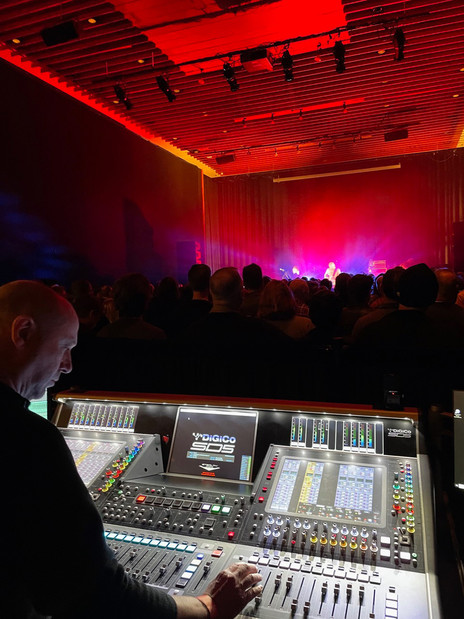
Tex Houston mixing The Subliminals @ Flying Nun 40th anniversary Wgtn - photo by Ged Taylor.
What sort of music do you listen to today?
Tex: “Lately I’ve been listening to whatever Tidal dishes out to me using the algorithm based on my saved music, but then I go back and put on a Neil Young album or whatever and sort of go, yeah, that’s what I was after. The last CD I bought was Julia Jacklin. And I’ve had Tiny Ruins on high rotate of late. The other thing is that I’m always really into whatever recording project I’m doing at the time. You get so involved in it that it takes over and it sort of becomes part of you.
“I was thinking back to my teenage years recently, and how all those records were really formative. The Jam and Blondie, Television, Bowie, the more punky stuff like The Damned and The Clash, and even earlier things like Fleetwood Mac. Television’s Marquee Moon is still one of my favourite albums. I play a lot of Neil Young and Buffalo Springfield. I’ve always been a fan of Nick Cave, and his live shows are amazing too. I also have this compilation of songs that inspired Nick Cave called Original Seeds, it’s such a great compilation.
“I’m also a fan of soul music, Smokey Robinson, Marvin Gaye, Al Green … I love it. And as you know one of my favourite songs has always been ‘Me and Mrs Jones’ by Billy Paul. I love the production on those records. I guess the upshot is that I try to listen to as much new music as I can, but I often fall back on the music I’ve known and loved for years.”
If you look back on it all now what are the real highlights?
Tex: “(long pause) All of it really. I’ve just been so lucky to work with such incredibly talented and special people over the years, and I still am. I’ve loved the camaraderie of the international tours and those magic live shows when everything just seems to gel. And the satisfaction of sitting back at the end of recording an album and playing it all back together.”
--
The four decades past have seen him involved with some of New Zealand’s seminal recordings and travel the world with several of our most loved bands. Today he’s still pursuing his lifelong passion for making things sound good.
It’s all a long way from the first time I met Tex at that early NDTs practice. Back then he’d never have imagined we’d be discussing his career in music 40 years on. In fact, he was reticent in talking about it now. But he’s like that, humble to a fault. A nice, down-to-earth bloke (he makes very good home brew and is handy in the kitchen) who I’ve never heard anyone say a bad word about.
If there’s ever been an example of someone making a career out of what they love doing, it’s sound guy Tex Houston.